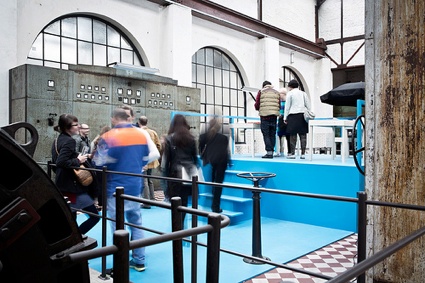 Photo Kristof Vrancken
Photo Kristof Vrancken
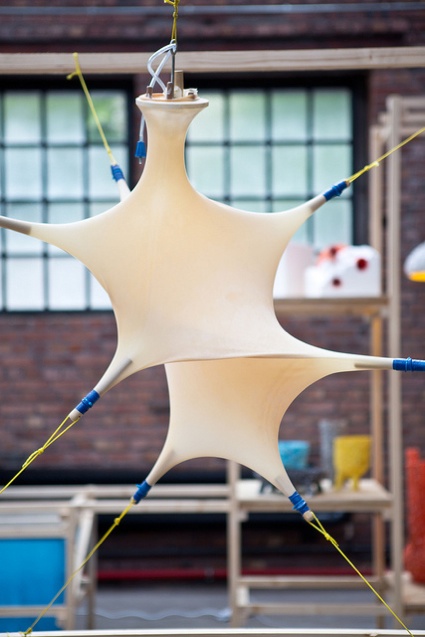 The Creative Factory (detail). Photo Kristof Vrancken
The Creative Factory (detail). Photo Kristof Vrancken
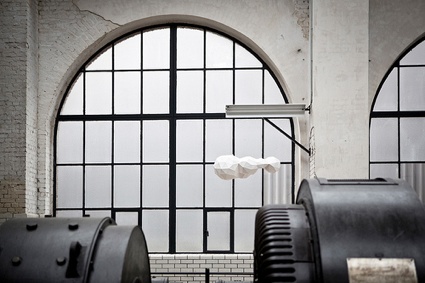 Photo Kristof Vrancken
Photo Kristof Vrancken
You might not be aware of it because i try to behave like a lady on my blog but I’ve spent the past couple of years shouting over the rooftops of the city that nothing bores me more than an exhibition of industrial, product or interaction design. Well, i’ve shouted too fast and too loud because last Wednesday i saw this brilliant exhibition called The Machine – Designing a New Industrial Revolution and suddenly, design became exciting again for me.
As befits the title, the show takes place on the site of an ex-coal mine in Genk, in the Belgian Limburg mining region. But instead of focusing on the industrial revolution, the exhibition champions the current revolution in digital production
‘The Machine’ is indeed a metaphor for the machinery deployed by designers who appropriate tools, material and systems and use them to help shape the future of production, consumption and more generally our relation to goods.
This new, and almost domestic machinery is exhibited among the impressive historical machines of the ex-coal mine. The work of the young designers both acknowledges and contrasts with the historical setting. The dark, heavy and now silent machines serve as a dramatic set for the exhibition, with Pantone Process Cyan hanging like the blue ‘key’ screen used in the cinema industry.
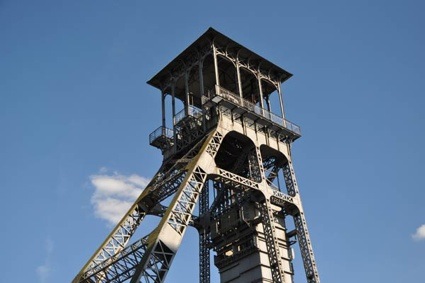 C-mine. Photo via matandme
C-mine. Photo via matandme
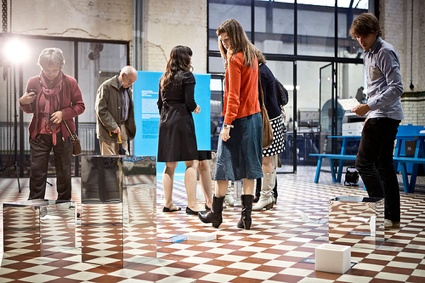 Photo Kristof Vrancken
Photo Kristof Vrancken
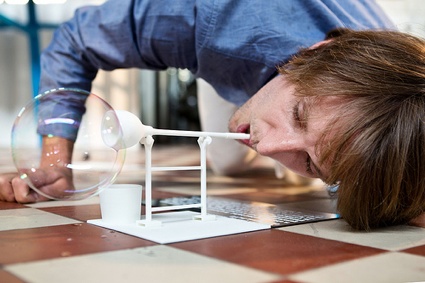 Photo Kristof Vrancken
Photo Kristof Vrancken
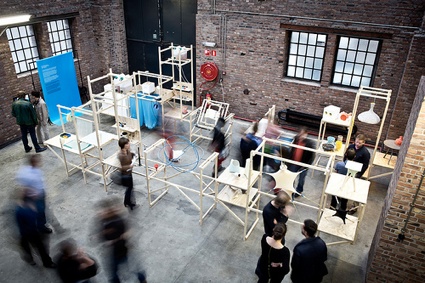 Photo Kristof Vrancken
Photo Kristof Vrancken
The industrial revolution was a revolution for engineers. Now designers are at the forefront of a new revolution. They are part of networks that enable them to develop new materials and systems, build their own machines, and seek new tools for production and distribution. These developments offer an alternative to mass production and open paths to a new economy and society.
By making production processes more transparent, designers demonstrate that production doesn’t have to be completely disconnected from the consumption.
In an interview for the catalogue of the exhibition (which you can and should download), Jan Boelen, the curator of The Machine as well as the artistic director of Z33 explains: “The physical object is yours, but the information is shared between everybody. Making this exhibition demonstrates the hope that things can really change.That on the ruins here in Genk or even in Detroit, things can change because people take control and start doing things by themselves.”
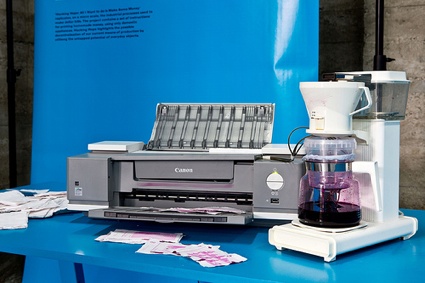 Juan Montero Valdes, Hacking Hope: All I Want to do is Make Some Money, 2012 – ongoing. Photo Kristof Vrancken
Juan Montero Valdes, Hacking Hope: All I Want to do is Make Some Money, 2012 – ongoing. Photo Kristof Vrancken
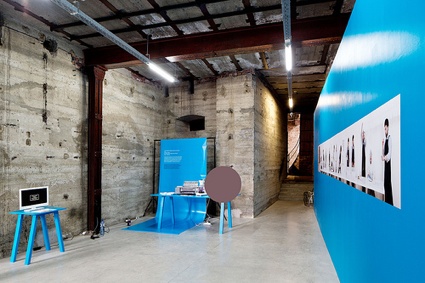 Juan Montero Valdes, Hacking Hope: All I Want to do is Make Some Money, 2012 – ongoing. Photo Kristof Vrancken
Juan Montero Valdes, Hacking Hope: All I Want to do is Make Some Money, 2012 – ongoing. Photo Kristof Vrancken
Juan Montero Valdes‘s All I Want to do is Make Some Money does literally what you’re already suspecting: the work replicates, on a domestic scale, the industrial process used to make dollar bills. Following the designer’s set of instructions and using only domestic appliances, anyone can print money at home.
All I Want to do is Make Some Money is part of ‘Hacking Hope’, a wider project that attempts to highlight the possible decentralisation of our current means of production by utilising the untapped potential of the many household appliances and machines we amass at home. From the tv set to the toaster or the printer, most of these devices often has only one function. Montero Valdés’s project taps into the mass potential of these machines, forcing them to collaborate with each other or adopt new roles.
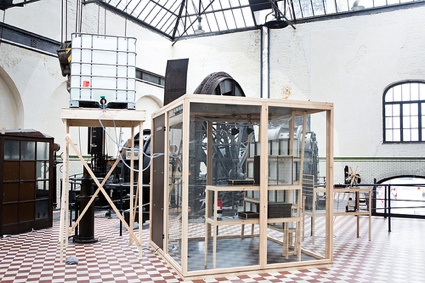 Thomas Maincent, SpiderFarm, 2011 – ongoing. Photo Kristof Vrancken
Thomas Maincent, SpiderFarm, 2011 – ongoing. Photo Kristof Vrancken
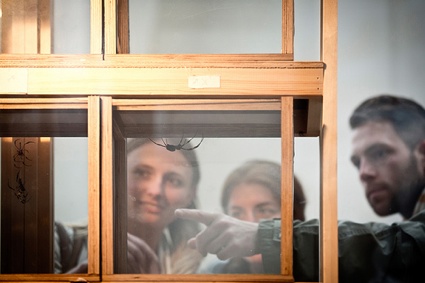 Thomas Maincent, SpiderFarm, 2011 – ongoing. Photo Kristof Vrancken
Thomas Maincent, SpiderFarm, 2011 – ongoing. Photo Kristof Vrancken
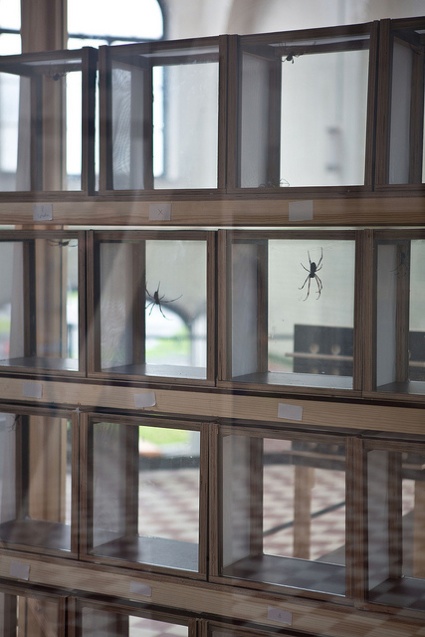 Thomas Maincent, SpiderFarm, 2011 – ongoing. Photo Kristof Vrancken
Thomas Maincent, SpiderFarm, 2011 – ongoing. Photo Kristof Vrancken
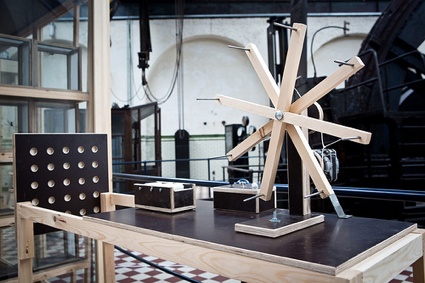 Thomas Maincent, SpiderFarm, 2011 – ongoing. Photo Kristof Vrancken
Thomas Maincent, SpiderFarm, 2011 – ongoing. Photo Kristof Vrancken
Thomas Maincent‘s SpiderFarm is a bio-factory that reconstructs the environmental conditions of a Madagascar silk spiders‘ natural habitat.
SpiderFarm from Thomas Maincent on Vimeo.
These spiders might produce the most spectacularly golden silk, but they are also territorial and may cannibalize each other if they are kept too close to each other. Maincent’s answer to the challenge is to build a high-rise indoor farm that gives spiders enough space to live until they’re guided to a “milking” area that coaxes the spiders to produce silk for human use.
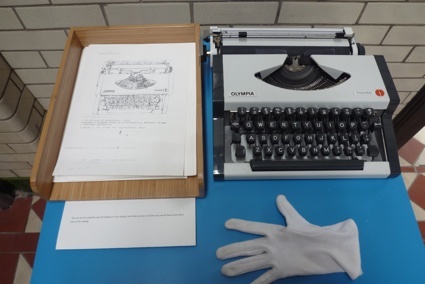 Jinhee Kwon, Stupid Machine
Jinhee Kwon, Stupid Machine
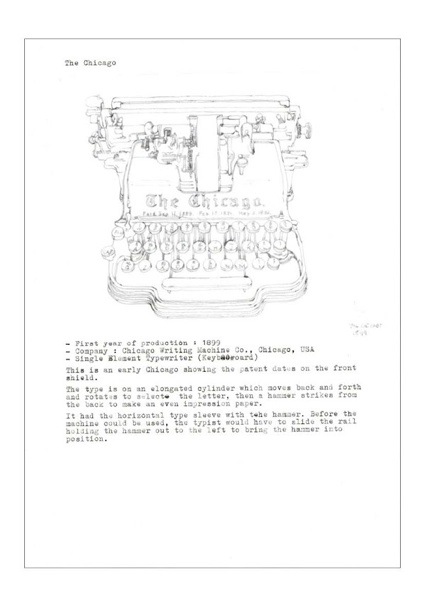 Jinhee Kwon, Stupid Machine
Jinhee Kwon, Stupid Machine
Jinhee Kwon‘s Stupid Machine is a catalogue that charts the history of redundancy of the typewriter in reverse chronological order.
Each page describes one step in the rise and fall of the typewriter. It provides hand drawn illustrations of each specific model of typewriter and describes its peculiarities and also the reason for its demise. The catalogue ends in April 2011 with the closing of the last manual typewriter factory in Mumbai, India. The catalogue is typeset using a typewriter and a specially designed typewriter generated display font.
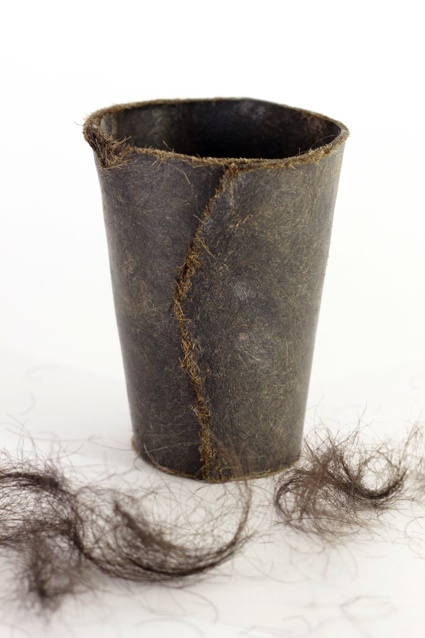 Thomas Vailly, The Metabolic Factory, 2011 – Present
Thomas Vailly, The Metabolic Factory, 2011 – Present
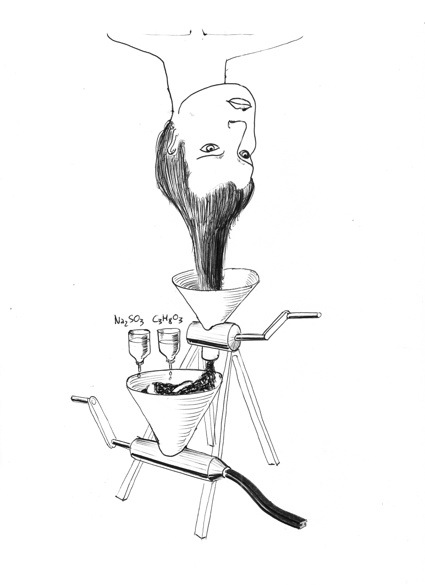 Thomas Vailly, The Metabolic Factory, 2011 – Present
Thomas Vailly, The Metabolic Factory, 2011 – Present
Thomas Vailly used human hair as the main material for a set of cups. The hair melts into a type of bioplastic resembling leather when mixed with glycerine and sodium sulphite. The designer sees this new polymer as a ‘vanitas still life’ that might revolt us but also invites us to consider the natural process of deterioration as well as the realistic options for the creation of new materials.
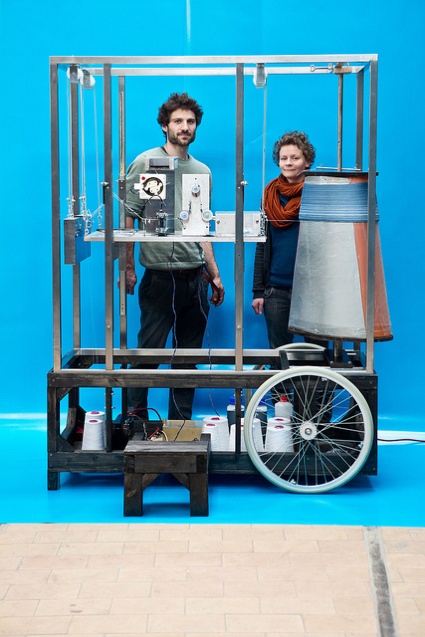 Mischer’Traxler, The Idea of a Tree, 2008 – ongoing. Photo Kristof Vrancken
Mischer’Traxler, The Idea of a Tree, 2008 – ongoing. Photo Kristof Vrancken
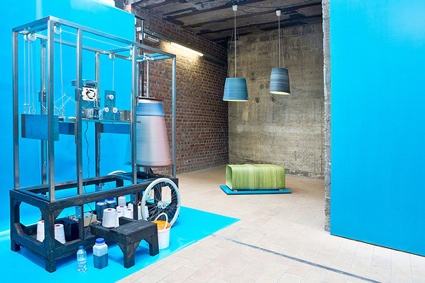 Mischer’Traxler, The Idea of a Tree, 2008 – ongoing. Photo Kristof Vrancken
Mischer’Traxler, The Idea of a Tree, 2008 – ongoing. Photo Kristof Vrancken
Katharina Mischer and Thomas Traxler from Studio Mischer’Traxler
The Idea of a Tree explores the relationship between machines and the natural environment. The installation constructs an object that documents its own production by expressing the amount of solar energy harnessed during a 24-hour period. When activated the machine uses threads to construct an object, with the colour depicting the intensity of sunlight.
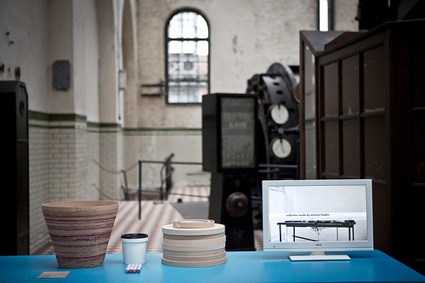 Mischer’Traxler, Collective Works. Photo Kristof Vrancken
Mischer’Traxler, Collective Works. Photo Kristof Vrancken
The duo is also exhibiting Collective Works, a device that works on a similar principle. The machine manufactures a basket, but only if it is being observed. Production is activated by the physical presence of a viewing audience, with the colour of the wooden veneer-strip getting darker as more people gather around the device. Each basket bears the unique traces of the interest in its own fabrication.
According to Studio Mischer’Traxler, Collective Works attempts to question the relationships between man and machine, with the spectators transformed into ‘workers’ – observation becomes labour.
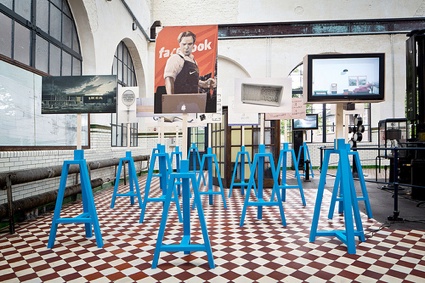 Tal Erez, (Waiting for) the People, 2012 – ongoing. Photo Kristof Vrancken
Tal Erez, (Waiting for) the People, 2012 – ongoing. Photo Kristof Vrancken
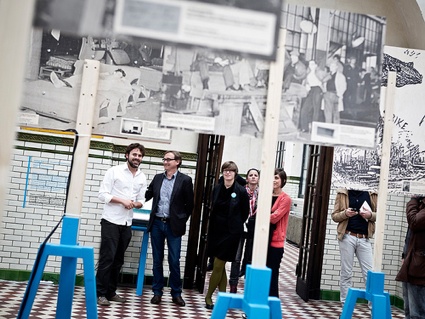 Tal Erez, (Waiting for) the People, 2012 – ongoing. Photo Kristof Vrancken
Tal Erez, (Waiting for) the People, 2012 – ongoing. Photo Kristof Vrancken
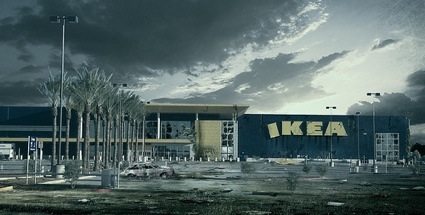 Tal Erez, (Waiting for) the People (The End of Retail), 2012 – ongoing. Image Tal Erez
Tal Erez, (Waiting for) the People (The End of Retail), 2012 – ongoing. Image Tal Erez
For Tal Erez, new production methods construct new socio-political systems. From the development of guilds in the Middle Age’s to the labour unions of the 20th century, workers have always influenced political power. Erez’s project questions the demise of the workers voice and proposes ways to reinstate it within our post-Fordist society. ‘(Waiting for) the People’ is a set of 14 protest signs that call for change. The recto of each sign bears an image that hints at a possible future, where the home has become the site of production thanks to a wider availability of 3D printers. The verso shows a documentary image that depicts a workers’ protest from the industrial era – proposing a link between production methods and socio-political change.
Each project in the exhibition deserves a post of its own or at least a mention in this one but you can read about the other works exhibited in the catalogue. It is available for download from the press area.
More images from the show:
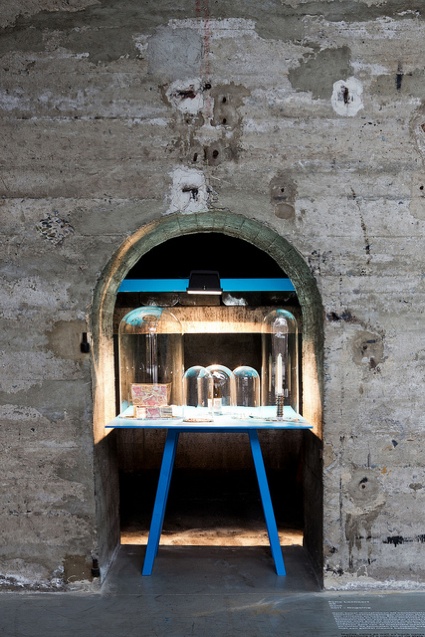 Photo Kristof Vrancken
Photo Kristof Vrancken
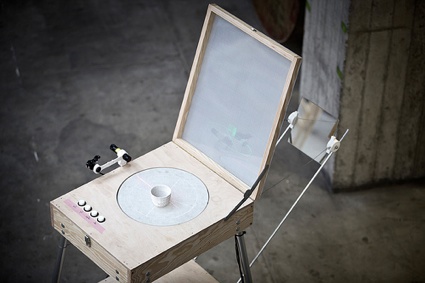 Photo Kristof Vrancken
Photo Kristof Vrancken
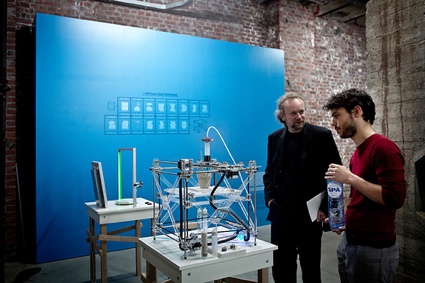 Unfold, L’Artisan Electronique. Photo Kristof Vrancken
Unfold, L’Artisan Electronique. Photo Kristof Vrancken
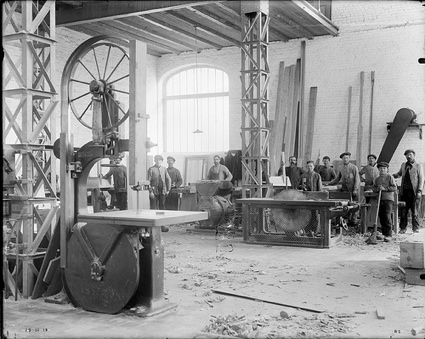 Historical photos. Credit: Hasselt city archive – LRM
Historical photos. Credit: Hasselt city archive – LRM
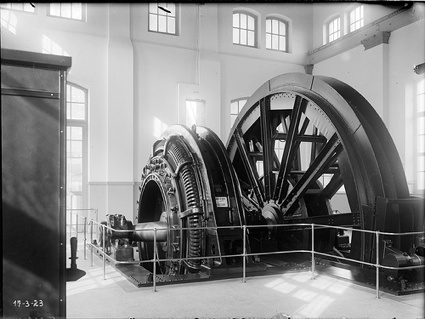 Historical photos. Credit: Hasselt city archive – LRM
Historical photos. Credit: Hasselt city archive – LRM
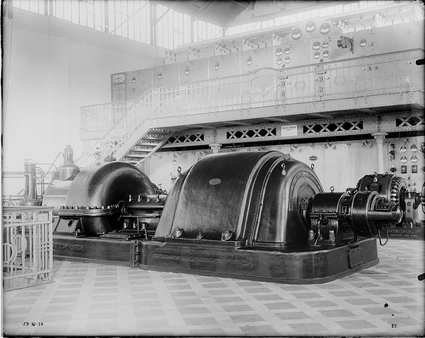 Historical photos. Credit: Hasselt city archive – LRM
Historical photos. Credit: Hasselt city archive – LRM
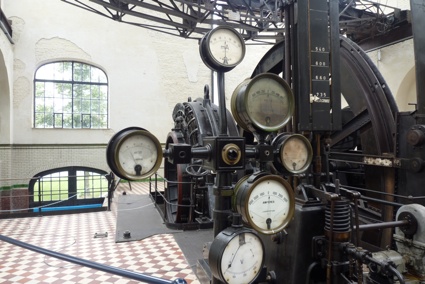
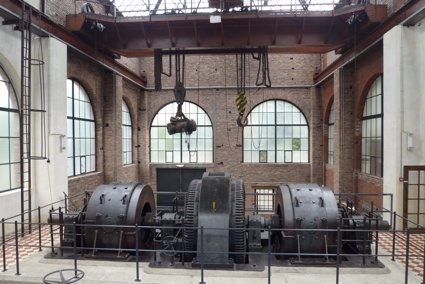
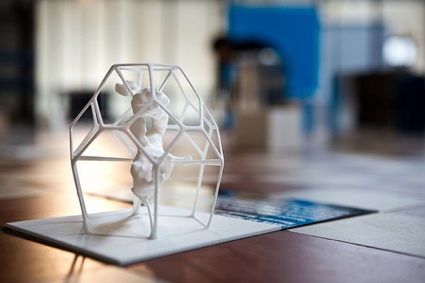 Maya Ben David and Jon Stam, Save as Mine. Photo Kristof Vrancken
Maya Ben David and Jon Stam, Save as Mine. Photo Kristof Vrancken
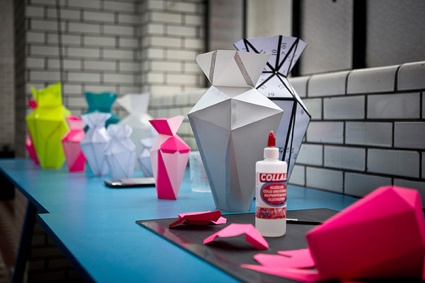 Christian Fiebig, Flatform. Photo Kristof Vrancken
Christian Fiebig, Flatform. Photo Kristof Vrancken
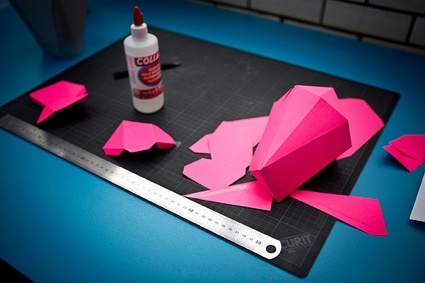 Christian Fiebig, Flatform. Photo Kristof Vrancken
Christian Fiebig, Flatform. Photo Kristof Vrancken
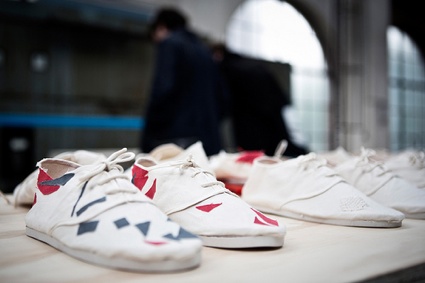 Eugenia Morpurgo, Repair It Yourself. Photo Kristof Vrancken
Eugenia Morpurgo, Repair It Yourself. Photo Kristof Vrancken
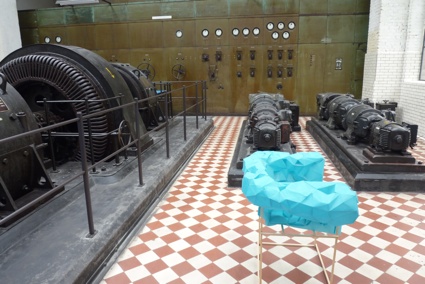 Photos i’ve taken in the exhibition.
Photos i’ve taken in the exhibition.
The Machine – Designing a New Industrial Revolution remains open at C-mine Designcentrum, in Genk, Belgium until 07.10.2012.
